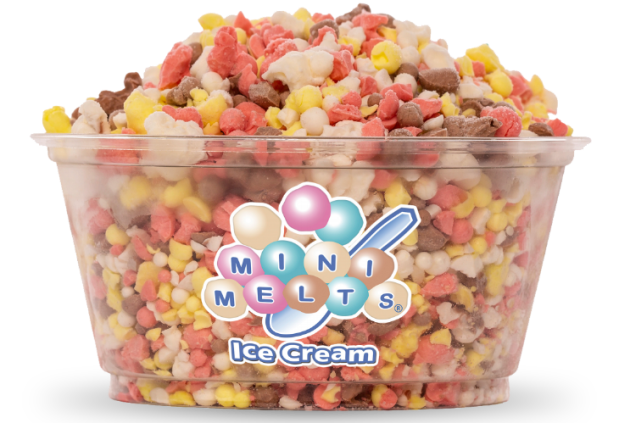Mini Melts Leverages Automated Kiosks to Drive off-Hours Concessions Sales

As the food service industry looks for ways to meet demand amid ongoing labor challenges, many companies are turning to automated channels to boost their capacity.
Mini Melts, for its part, a beaded ice cream brand with locations in many nontraditional venues such as zoos, family entertainment centers, aquariums, malls and others, has been leveraging its automated kiosks to drive sales at times when venues cannot keep carts staffed. In an interview with PYMNTS, Vice President of Distribution Jenna Benvignati discussed this strategy.
“With the way that the labor market is, the zoo doesn’t always have someone to man that cart from nine o’clock in the morning, when the zoo is open, until six o’clock in the evening,” Benvignati said. “So, the automated kiosk supports those sales where, if the [employee-operated location] isn’t opening until two in the afternoon, our customer’s still able to get the product before then.”
Overall, PYMNTS Intelligence found food service customers tend to prefer face-to-face service. Insights from the July edition of PYMNTS’ Connected Dining series, “Connected Dining: The Robot Will Take Your Order Now,” which drew from a survey of nearly 2,000 U.S. consumers, revealed that only 17% of women and 33% of men reported being interested in visiting a restaurant that uses robotics.
However, automation in the restaurant industry may be more common than these consumers realize. A study cited in the PYMNTS report “Inflation Puts Technology on the Menu for Restaurants,” the June edition of the “B2B and Digital Payments Tracker®,” created in collaboration with American Express, revealed that 76% of restaurants are already using automation in at least three areas of operations.
Yet it is not only consumers who have their hesitations. Benvignati noted that some businesses have had doubts about the technology — ones which, she said, are based on an outdated idea of what automated kiosks are like.
“With some of the customers we try to sell these to, they’re hesitant,” she said. “They think it’s a lot of maintenance. … It’s not. … The automated sector has gotten better with the machines that they build and with the components that are inside them.”
Automation is increasingly catching on across all parts of the industry. Autonomous delivery firm Serve Robotics, which Uber Eats has tapped for last-mile automation, announced last month that it completed a go-public transaction and raised $30 million in financing. In South Korea, robotic waiters are reportedly becoming popular with restaurateurs. Fast-casual chain Sweetgreen’s CEO Jonathan Neman shared in June that the company expects all locations’ kitchens to be automated within the next five years.
Automated kiosks and self-service vending machines, for their part, are popping up in more areas. Last month, for instance, food giant Nestlé announced that its frozen pizza brand DiGiorno is testing a pizza-making vending machine, selling ready-to-eat thin crust pies.
Mini Melts sees an opportunity to grow its automated kiosk sales on the roadside.
“Where we have seen a big uptick lately is in rest stops on the turnpikes and highways because of electric car charging,” Benvignati said. “We believe that, because there’s more people going there to charge their cars, we are seeing that increase in sales there.”

